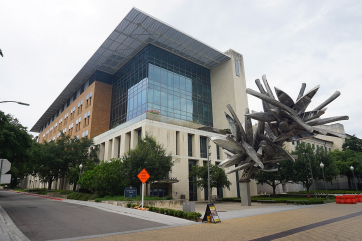Runaway Greenhouse More Likely to Occur on Earth than Previously Believed
By Russell WesterholmA "runaway greenhouse," rendering Earth uninhabitable, might be easier to initiate than previously believed, NBC News reported.
Researchers from the University of Washington (UW) and the University of Victoria (UV), in British Columbia, Canada, published a study Sunday in Nature Geoscience. The study discovered, while highly unlikely, the extreme circumstances for a massive overheating of the planet are not quite as unimaginable as they were before.
According to a press release on UW's website, a runaway greenhouse is a stage of global warming where the planet absorbs more solar energy than it can release to maintain an equilibrium. This would result in the Earth boiling to the point where oceans would evaporate into the atmosphere.
Lead author Colin Goldblatt, an Earth system professor at UV, told NBC News it is highly unlikely for Earth to get to that point.
"We could go into the runaway greenhouse today if we could get the planet hot enough to get enough water vapor into the atmosphere," he said. "Our estimate is that it would take 30,000 parts per million of carbon dioxide in the atmosphere to make it warm enough to trigger this runaway greenhouse."
The level of carbon dioxide today is 400 parts per million and burning all of Earth's fossil fuels (coal, oil) would only raise it to 2,000 to 3,000 parts per million. Goldblatt said getting to 30,000 "really seems quite unlikely."
The researchers believe a runaway greenhouse begins as a planet leaves its star's "habitable zone," an area in space in which water can exist and sustain life. The study found the habitable zone to be smaller than previously believed.
"The habitable zone becomes much narrower, in the sense that you can no longer get as close to the star as we thought before going into a runaway greenhouse," said co-author Tyler Robinson, a UW astronomy postdoctoral researcher.
The discovery will cause scientists to redefine various habitable zones of other stars and evaluate what planets may actually be in those areas.
The researchers concluded that as the sun gets brighter, Earth will come closer to a runaway greenhouse, but such an event is still more than a billion years away.
(The author of this article changed the wording of a sentence for clarity.)








